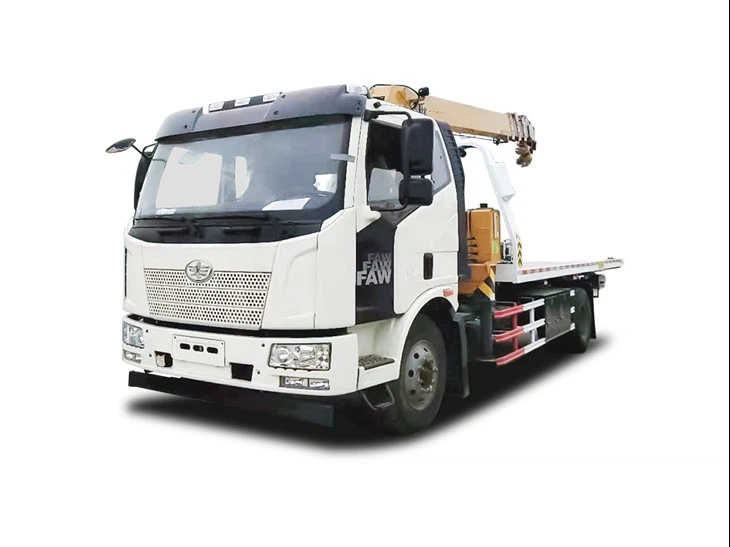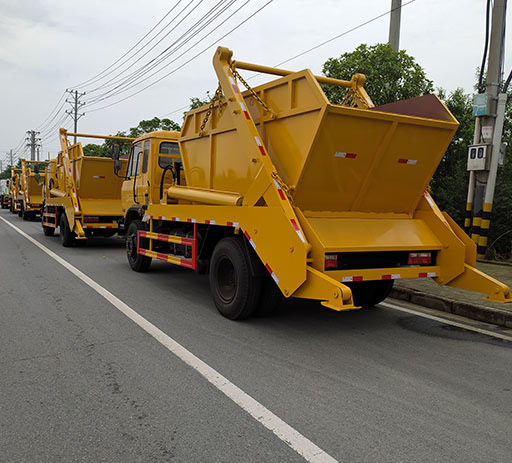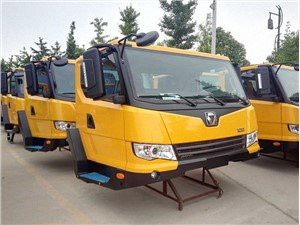Understanding the Gas Tanker Truck: A Comprehensive Guide

Gas tanker trucks are essential in transporting fuel across various regions, ensuring that gas stations remain stocked and ready to serve customers. With the increase in fuel demand and the need for efficient logistics, understanding how gas tanker trucks operate is key. This article aims to delve into the intricacies of gas tanker trucks, covering types, functions, safety measures, and much more.
1. What is a Gas Tanker Truck?
A gas tanker truck is a specialized vehicle designed to transport gasoline, diesel, and other liquid fuels. These vehicles can vary in size, shape, and capacity, but they share common features that make them ideal for transporting hazardous liquids safely.
1.1 Types of Gas Tanker Trucks
- Petroleum Tankers: Specifically designed for transporting petroleum products.
- Fuel Tankers: Usually used for delivering diesel and other fuel types to business and residential locations.
- Cryogenic Tankers: Intended for transporting liquefied gases at extremely low temperatures, such as LNG.
- Multiproduct Tankers: Capable of transporting different types of fuels in separate compartments.
2. Anatomy of a Gas Tanker Truck
Understanding the structure of a gas tanker truck is vital for comprehending its functionality. The anatomy includes:
2.1 Tank
The tank is the main component of a gas tanker truck. It is typically made from robust materials like aluminum or stainless steel to withstand the corrosive nature of many fuels.
2.2 Compartmentalization
Many gas tankers have compartments that allow them to carry different types of fuel simultaneously. This maximizes efficiency, reducing the number of trips needed to deliver various fuels.
2.3 Pumping System
The pumping system is crucial for loading and unloading fuel. It typically consists of a pump, hoses, and valves that control the flow of liquid.
2.3.1 Types of Pumps
- Centrifugal Pumps: Most commonly used for unloading and transporting fuel.
- Diaphragm Pumps: Often used in situations where spills must be minimized.
3. Gas Tanker Truck Capacity

The capacity of gas tanker trucks can vary widely based on design and operational requirements. Common capacities include:
| Type of Tanker Truck | Capacity (Gallons) |
|---|---|
| Single Compartment | 6,000 – 10,000 |
| Double Compartment | 10,000 – 15,000 |
| Multi-Compartment | 15,000 – 20,000+ |
4. How Gas Tanker Trucks Work
Gas tanker trucks operate through a series of processes that ensure safe and efficient fuel transportation:
4.1 Loading
Fuel is pumped from a storage facility into the tanker truck’s tank through a loading arm or hose. Precautions include monitoring pressure and ensuring compatibility with the type of fuel being loaded.
4.2 Transporting
During transportation, the truck must adhere to specific regulations regarding speed limits, weight, and road restrictions to ensure safety. The design of tanker trucks allows for smooth navigation even on rough terrains.
4.3 Unloading

Upon reaching the destination, the unloading process begins. The pump system is activated to transfer the fuel from the tanker truck to the storage tanks at gas stations or facilities.
5. Safety Measures and Regulations
Transporting fuel poses numerous risks; therefore, gas tanker trucks must adhere to strict safety regulations.
5.1 Hazardous Materials Regulations
In many countries, gas tanker truck operations are governed by hazardous materials regulations, such as the Department of Transportation (DOT) regulations in the U.S. These include:
- Proper labeling and placarding of vehicles.
- Regular inspections and maintenance of safety equipment.
- Training for drivers on handling hazardous materials.
5.2 Safety Equipment
Key safety equipment on gas tanker trucks includes:
- Fire Extinguishers: Required on all tanker trucks.
- Emergency Shut-off Valves: Enable quick isolation of the fuel tank in case of emergencies.
- Spill Kits: Essential for managing any accidental fuel spills during transportation.
6. Environmental Impact of Gas Tanker Trucks
Gas tanker trucks can have a significant environmental impact if not managed correctly. Understanding these impacts is essential for promoting better practices.
6.1 Fuel Spills
Although rare with modern technology and safety protocols, fuel spills can have devastating consequences for local ecosystems. Prompt response and management practices can minimize effects.
6.2 Emissions
Gas tanker trucks contribute to air pollution, primarily through diesel emissions. Companies are now shifting towards more environmentally-friendly technologies, such as biofuels and hybrid engines.
7. Operating Costs of Gas Tanker Trucks
The financial aspect of operating gas tanker trucks is crucial for businesses. Key factors include:
7.1 Fuel Costs

As fuel prices fluctuate, the cost of running tanker trucks varies significantly. Companies often devise strategies to optimize routing and reduce fuel consumption.
7.2 Maintenance Costs
Regular maintenance is essential to prevent costly repairs. Companies must allocate budget for routine servicing, repairs, and inspections to ensure safety compliance.
7.3 Insurance Costs
Insurance for gas tanker trucks is often higher due to the perceived risk involved in transporting hazardous materials. Businesses should shop around for competitive rates while ensuring adequate coverage.
8. The Future of Gas Tanker Trucks
As technology and environmental standards evolve, the future of gas tanker trucks looks promising. Key trends include:
8.1 Electrification and Alternative Fuels
The transport industry is witnessing a gradual shift towards electric vehicles and alternative fuels as a way to reduce dependency on fossil fuels.
8.2 Automation
Automated driving technology is being tested in various forms of transportation, including gas tanker trucks, which may increase efficiency and safety in the future.
9. Practical Tips for Gas Tanker Truck Drivers
For drivers of gas tanker trucks, certain practices can ensure safety and efficiency:
9.1 Continuous Training
Engage in continuous education regarding regulations, emergency procedures, and safe driving practices.
9.2 Pre-Trip Inspections
Conduct thorough checks on the pumping system, hoses, and compartment seals before each trip to ensure there are no potential leaks.
9.3 Adhering to Speed Limits
Always follow speed limits, especially when carrying hazardous materials, to ensure safe transport.
10. FAQ Section
What is the average lifespan of a gas tanker truck?
The average lifespan of a gas tanker truck is around 15-20 years, depending on maintenance and usage.
Are gas tanker trucks allowed on all roads?
No, gas tanker trucks must adhere to specific routing and weight restrictions in many areas to ensure safety.
How often should gas tanker trucks be inspected?
Gas tanker trucks should be inspected at least once a year, but more frequent checks may be necessary based on usage and regulations.
What are the risks of transporting fuel?
The main risks include fuel spills, fires, and accidents, which can have severe consequences for health and the environment.
How can companies minimize the environmental impact of gas tanker trucks?
Companies can minimize the impact by investing in modern, low-emission vehicles as well as ensuring adherence to environmental regulations during operations.
